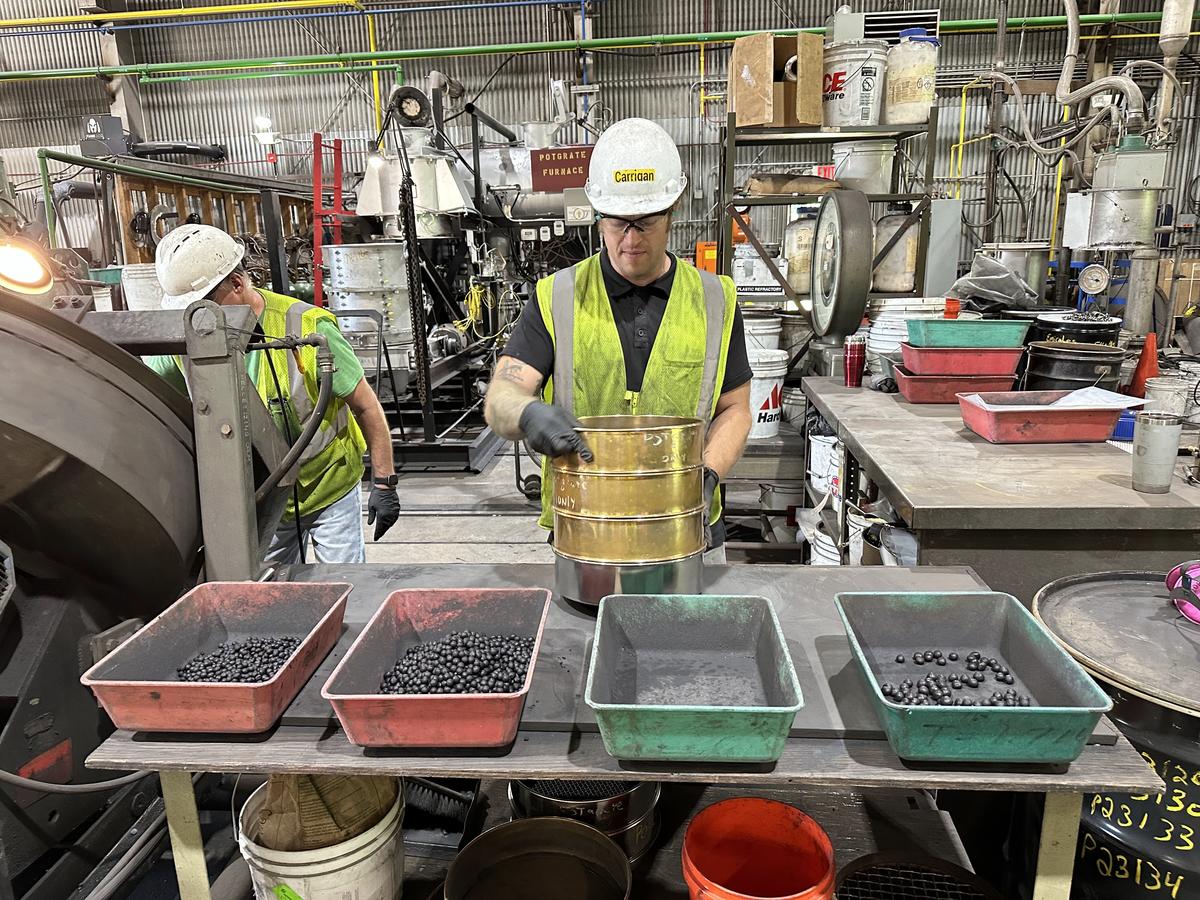NRRI received nearly $1.5M in funding from the U.S. Department of Energy to help develop transformative technologies in the iron and steel industries.
The funding is managed by DOE’s Advanced Research Projects Agency-Energy (ARPA-E) under the Revolutionizing Ore to Steel to Impact Emissions (ROSIE) program. NRRI is funded for two projects that will evaluate Minnesota iron ore and underutilized iron resources for higher value iron products. NRRI will also evaluate the final ore products for use in electric arc furnace steel production.
- NRRI received $575,000 as part of a $2.8M grant to the University of Minnesota, which will work to develop a fully electrified microwave hydrogen plasma process to replace blast furnace technology. The technology will use blast furnace and direct reduction grade iron ore concentrates, eliminating the emissions associated with the pelletization, sintering, and coke-making steps in the conventional blast furnace process.
- NRRI received $900,000 as part of a nearly $3M grant to Tufts University, in Medford, MA. This project will develop a method to directly reduce iron ore concentrates with ammonia, eliminating all direct process emissions from the ironmaking step, as well as emissions that result from baking iron ore with clay to make hard pellets. By using low-grade Minnesota ores, bypassing the pellet-hardening step, and lowering melting costs, this new approach to ammonia-based reduction would reduce the cost of domestic steel while decreasing total steel emissions by greater than 60 percent.

The iron and steel industry accounts for approximately seven percent of global greenhouse gas (GHG) emissions and 11 percent of global carbon dioxide (CO2) emissions. By 2050, global iron and steel demand is projected to rise as much as 40 percent. This projected growth underscores the importance of lowering emissions from this industry. Current blast furnace technologies — responsible for approximately 70 percent of global iron and steel GHG emissions — require carbon for heat, chemistry, and structure, making the process particularly difficult to decarbonize.
NRRI’s projects are part of 13 projects across nine states to meet the federal goal to reduce harmful, climate-change fueling emissions and imports of iron and steel products.
“NRRI's multidisciplinary approach to research combined with our knowledge and experience of iron ore mining, processing, pelletizing, reduction, metal making, and product evaluation make us a valuable partner in this work,” said Brett Spigarelli, NRRI metallurgical engineer.
All project descriptions for the teams can be found on the ARPA-E website. If successful, novel ironmaking technologies meeting the metrics set forth by ROSIE will enable a reduction of U.S. emissions by over 65 million metric tonnes CO2 emitted annually (approximately one percent of U.S. emissions) and global emissions by over 2.9 gigatonnes annually (5.5 percent of global emissions).
The mission of NRRI is to deliver integrated research solutions that value our resources, environment and economy for a sustainable and resilient future.
